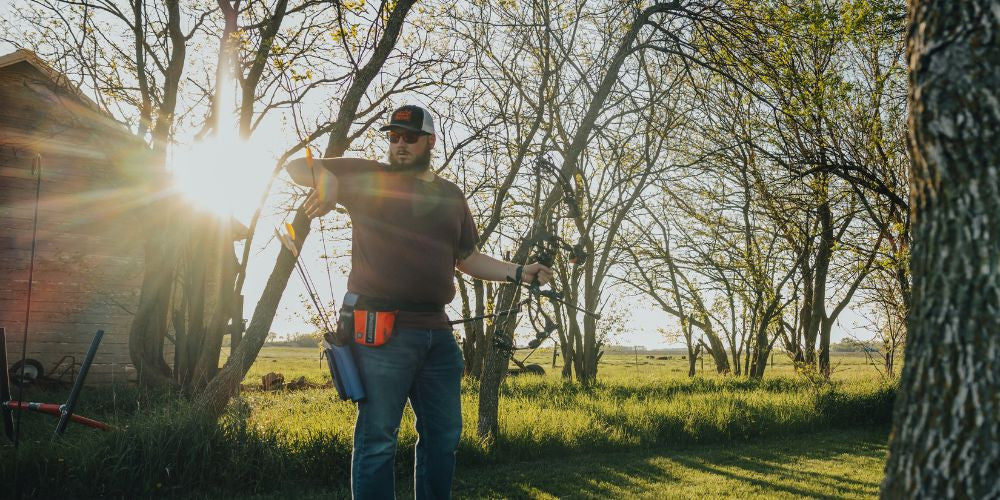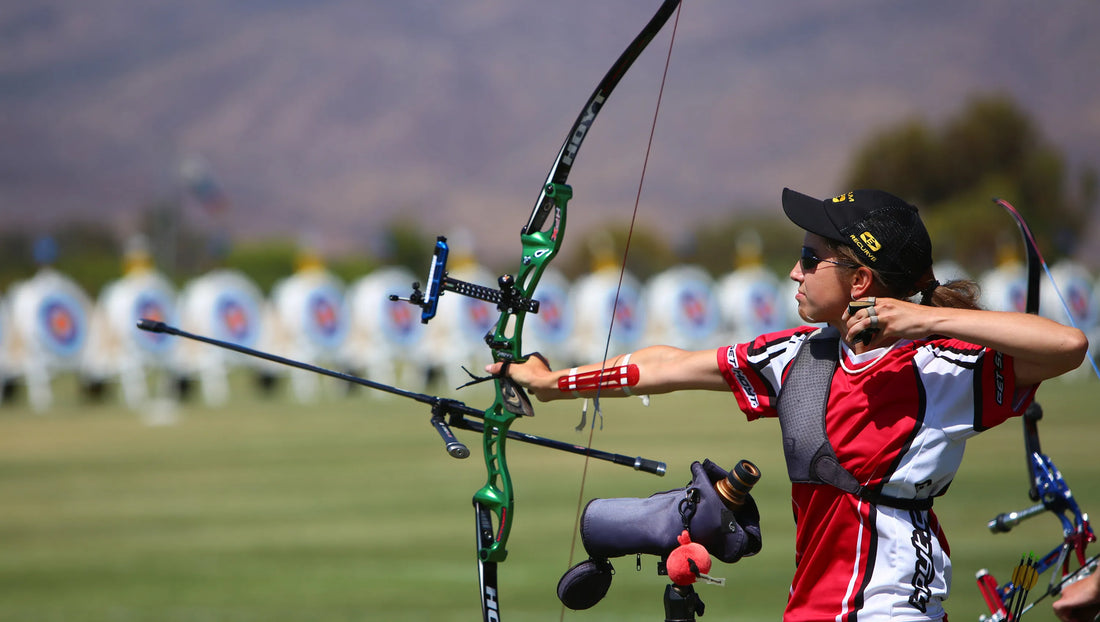Archers need to be consistent and dedicated in their training to become skilled at their craft. Like any other sport, practice makes perfect. However, practicing too often or not enough can have detrimental effects on an archer's performance. This is why it's important to find the right frequency of training sessions to help archers achieve their goals while avoiding overtraining and burnout.
In this article, we will explore the recommended frequency of training for archers of different levels, as well as important considerations for developing a training schedule and periodization plan.
The Importance of Consistent Practice For Archers
Consistent practice is crucial for archers to improve their skills and achieve mastery. Discussed below are some of the benefits of consistent practice.
Muscle Memory Development
One of the primary benefits of consistent practice is the development of muscle memory. Muscle memory is the ability to perform a specific movement repeatedly without thinking about it consciously. Through consistent practice, an archer can develop muscle memory, which allows them to perform the same shot repeatedly without thinking about it. This muscle memory is crucial for an archer to achieve consistency in their technique and accuracy in their shots.
Improving Mental Focus and Concentration
Archers need to maintain mental focus during each shot to achieve accuracy and precision. Consistent practice helps to improve mental focus and concentration by allowing the archer to develop the discipline and concentration needed to maintain focus during each shot. Through consistent practice, archers can train their minds to stay focused on the task at hand, block out distractions, and maintain concentration throughout the competition.
Learning Proper Technique and Form

Consistent practice helps archers to learn proper technique and form. Archers can work on their grip, stance, posture, and release technique to achieve consistency and accuracy. By practicing the proper technique repeatedly, an archer can develop muscle memory and perform the same shot repeatedly with accuracy.
Frequency of Training for Beginners Archers
Beginners in archery require more frequent training to develop the foundational skills necessary to become proficient in the sport. However, it's important not to overdo it and risk injury or burnout. Here are some key factors to consider when determining the frequency of training for beginners:
Starting Slowly

When starting in archery, it's essential to take it slow and not overdo it. Beginners should start with a few training sessions per week, focusing on the basic fundamentals, such as proper grip, stance, anchor point, and release technique - basically just how to properly shoot arrows. Starting slowly helps the body and mind to adjust to the demands of the sport without causing excessive strain or fatigue.
It's also important to remember that archery is a technical sport that requires precise movements - regardless of being a recurve or compound archer. Starting slowly and focusing on technique rather than power or speed can help beginners develop the proper form, which can be challenging to change once ingrained.
Consistency over Intensity
Consistency is essential in archery, even more so for beginners. Consistent training allows beginners to develop muscle memory and improve their technique gradually. It's better to train consistently at a moderate intensity rather than training intensely for a few sessions and then taking a break.
Beginners should aim for two to three practice sessions per week, with each training session lasting around an hour and focusing on form and technique rather than speed or power. Consistency over intensity is the key to developing proper form and technique and avoiding overuse injuries.
Building up Endurance
Archery requires a lot of physical and mental endurance. Beginners should aim to build up their endurance gradually by increasing the frequency and duration of their training sessions. However, it's crucial not to overdo it, as excessive training can lead to injury or burnout.
Beginners should aim to gradually increase the duration and frequency of their training sessions, building up to four to five sessions per week. It's also crucial to listen to the body and take rest days when needed, allowing the muscles to recover and preventing overuse injuries.
It's important to pay attention to how the body responds to training and adjust the frequency accordingly. If a beginner is feeling fatigued or experiencing pain, it may be necessary to take a break or reduce the training frequency.
Seeking Professional Guidance

Beginners in archery should seek professional guidance to ensure they are training safely and effectively. A qualified archery coach can provide guidance on proper technique, equipment, and training frequency. They can also monitor progress and adjust the training frequency and intensity accordingly.
Beginners should aim to have at least one coaching session per week in addition to their training sessions. Coaches can also provide valuable feedback on form and technique, helping beginners to develop their skills and avoid bad habits.
How Often Should Intermediate Archers Practice?
Intermediate archers have already developed the basic skills needed for the sport and are looking to refine their technique and improve their accuracy. Training frequency is a crucial factor in achieving these goals while avoiding overtraining injuries and burnout. Here are some key factors to consider when determining the training frequency for intermediate archers to master archery:
Setting Goals

Setting goals is crucial for intermediate archers to determine their training frequency. Goals can be short-term, such as improving accuracy, or long-term, such as competing at a high level. Setting achievable and realistic goals helps archers to focus on their training and determine how often they need to train to achieve these goals.
It's important to remember that the frequency of training should align with the goals set. An archer looking to compete at a high level will likely need to train more frequently than those looking to improve their accuracy.
Increasing Training Intensity
Intermediate archers should start to increase the intensity of their training sessions while still focusing on proper technique. It's recommended to aim for four to five sessions per week, with each session lasting between one to two hours.
Intermediate archers should start aiming toward advanced techniques, such as shooting on uneven terrain, shooting in different weather conditions, and learning new shot styles. It's essential to continue to focus on proper form and technique, even when increasing training intensity.
For intermediate archers, a recommended training frequency of four to five sessions per week is recommended, with each session lasting between one to two hours. However, it's essential to pay attention to how the body responds to training and adjust the frequency accordingly. If an intermediate archer is feeling fatigued or experiencing pain, it may be necessary to take a break or reduce the training frequency.
Incorporating Strength and Conditioning
Strength and conditioning are essential for intermediate archers to improve their accuracy and prevent injuries. Archers should incorporate strength training into their training routine, focusing on building core strength and improving upper body strength.
Cardiovascular conditioning is also essential for an archer to develop endurance and maintain focus during long competitions. Cross-training activities such as jogging, swimming, or cycling can help archers build endurance and prevent overuse injuries.
Allowing for Rest and Recovery

Rest and recovery are crucial for intermediate archers to prevent overuse injuries and burnout. It's essential to listen to the body and take rest days when needed. Archers should aim for at least one or two rest days per week, allowing the muscles to recover and reducing the risk of injury.
Rest and recovery can also include stretching and foam rolling to help relieve muscle tension and prevent soreness. Archers can also benefit from massage therapy or physiotherapy to help prevent and treat injuries.
Seeking Professional Guidance
Intermediate archers should continue to seek professional guidance from a qualified coach to ensure they are learning the correct techniques and training safely and effectively. Coaches can provide feedback on form and technique, suggest training modifications, and monitor progress toward goals.
Coaches can also provide guidance on archery equipment upgrades, such as bow or arrow modifications, accessories for recurve or compound bows, and recommend appropriate competitions to enter to further improve skills.
Frequency of Training for Advanced Archers
Advanced archers have already developed a solid foundation of technique and form and are now focused on refining their skills and achieving higher levels of accuracy and consistency. Here are some key factors to consider when determining the frequency of training for advanced archers:
Setting Goals
Setting goals is important for advanced archers to determine the frequency and intensity of their training. This can involve setting short-term and long-term goals and breaking them down into smaller milestones. Goals can include refining technique, incorporating more advanced techniques improving accuracy, preparing for competition, or achieving a specific score. Once goals have been established, advanced archers can determine the frequency of training needed to achieve these goals.
Balancing Training and Recovery
Advanced archers require a balance between training and recovery to maintain peak performance. This involves incorporating rest days and recovery activities such as stretching and massage into their training routine. Advanced archers should aim to train at least five to six times a week, with each session lasting around two hours. However, it's important to listen to the body and adjust the frequency if needed. If an advanced archer is feeling fatigued or experiencing pain, it may be necessary to take a break or reduce the training frequency.
Focusing on Specific Skills
Advanced archers should focus on specific skills and techniques that will improve their performance in competition. This can involve drilling specific shots, working on mental skills such as visualization and focus, or improving accuracy at longer distances. Advanced archers should also focus on refining their technique and improving consistency in their shots. By focusing on specific skills, advanced archers can determine the frequency of training needed to achieve their goals.
Working with a Qualified Coach
Working with a qualified coach is important for advanced archers to receive feedback on their technique and identify areas for improvement. Coaches can also help advanced archers develop a training plan that balances training and recovery and prepares them for competition. Advanced archers should aim to work with a coach at least twice a week or more frequently if possible.
Incorporating Strength and Conditioning

Strength and conditioning are important for advanced archers to maintain peak performance and prevent injuries. Advanced archers should focus on building strength and endurance in the upper body, core, and legs. This can involve exercises such as push-ups, pull-ups, squats, and lunges. Cardiovascular exercise is also important for improving endurance and preventing overuse injuries. The frequency of strength and conditioning training will depend on individual needs and goals but should be incorporated into the overall training program.
Incorporating Mental Training
Mental training is also important for advanced archers to maintain focus and composure in competition. This can involve visualization exercises, breathing techniques, and mental rehearsal. Advanced archers should also develop strategies for dealing with pressure and maintaining focus during competition. Mental training can be incorporated into the overall training program, and the frequency will depend on individual needs and goals.
Archery Training Schedule and Periodization
A well-designed training schedule and periodization plan can help an archer master archery and maintain optimal performance. Here are some important considerations for archers when developing a training schedule and periodization plan:
Establish Goals
The first step in developing a training schedule and periodization plan is to establish goals. As an archer, you should identify their short-term and long-term goals, such as improving accuracy or increasing draw weight. This will help the archer develop a training program that is specific to their needs and goals.
Determine Training Frequency
The frequency of archery training sessions is an important consideration when developing a training schedule. For beginner archers, it is recommended to train 2-3 times per week, while intermediate and advanced archers may train 3-5 times per week. The frequency of training should be based on the individual's goals, fitness level, and recovery needs.
Develop a Periodization Plan
Periodization is the process of dividing a training program into different phases to target different aspects of performance. A typical periodization plan for archery may include three phases: the preparatory phase, the competitive phase, and the transition phase.
Preparatory Phase
The preparatory phase is the first phase of a periodization plan and typically lasts 8-12 weeks. This phase focuses on developing foundational skills and preparing the body for the demands of competition. The preparatory phase may include exercises to improve strength, flexibility, and technique. Archery practice during this phase may be less intense and focus on building a foundation for more advanced training.
Competitive Phase

The competitive phase is the second phase of a periodization plan and typically lasts 8-10 weeks. This phase focuses on developing the skills and techniques necessary for competition. Training sessions during this phase may be more intense and may involve simulating competition conditions, including shooting with other archers. The competitive phase may also involve adjusting equipment or developing mental strategies for competition.
Transition Phase
The transition phase is the final phase of a periodization plan and typically lasts 2-4 weeks. This phase focuses on recovery and preparing for the next training cycle. Practice sessions during this phase may be less intense and may involve active recovery or low-intensity activities.
Adjust Training Based on Feedback
It is important for every archer to monitor their progress and adjust their training program based on feedback. This may involve adjusting the frequency of training sessions, adjusting the intensity or duration of training sessions, or modifying the periodization plan based on progress toward consistently delivering the perfect shot.
Conclusion
In conclusion, consistent practice is critical to mastering archery. The frequency of training depends on the archer's skill level, with beginners recommended to train twice a week, intermediate archers three to four times a week, and advanced archers five to six times a week. Recovery and rest days are also essential to avoid injuries and burnout. By following a structured training schedule and taking adequate rest, archers can achieve mastery in archery.
 cust@legendarchery.com
cust@legendarchery.com 302 503 5767
302 503 5767 Whitestown, In 47075
Whitestown, In 47075




